23 Pilies Street

Photographer – Tomas Kapočius
23 Pilies Street. 2018
Lithuanian Art Museum
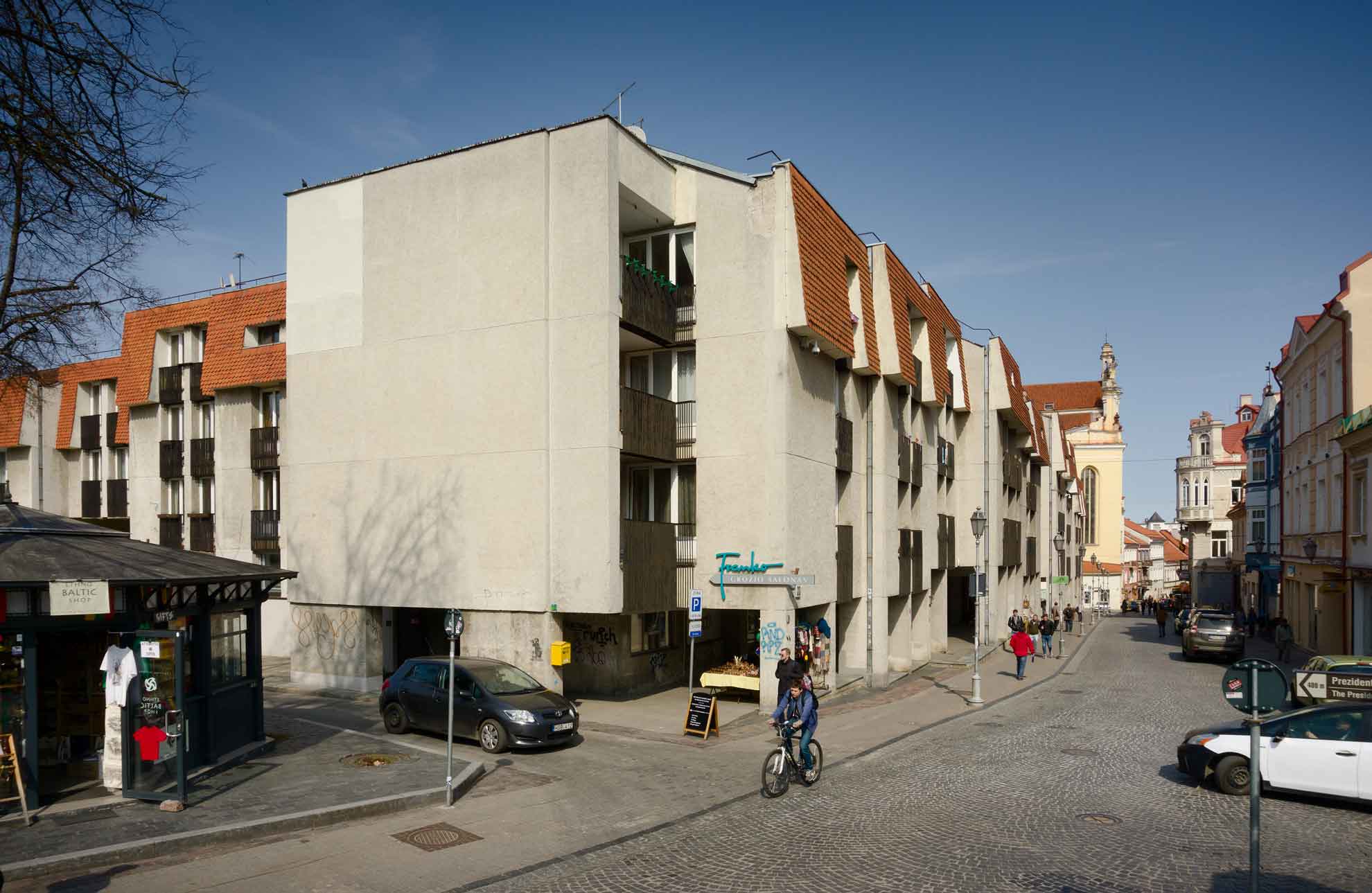
Photographer – Tomas Kapočius
23 Pilies Street. 2018
Lithuanian Art Museum

Photographer – Tomas Kapočius
23 Pilies Street. 2018
Lithuanian Art Museum
When searching for a location for a grand residence, one of the most influential and wealthiest political figures in the Grand Duchy of Lithuania, Michał Radziwiłł the Black, entered into an agreement under favourable conditions with the Vilnius Cathedral Chapter in 1540 regarding the house of the former Vilnius canon, which stood in a strategically ideal position (present-day 23 Pilies Street). Michał Radziwiłł the Black managed to join the nearby palace of the Voivode of Trakai Stanislovas Goštautas, the first husband of Barbara Radziwiłł. In 1562–1564, this was known as a place where Protestants gathered – they had their house of prayer, a library and a school. Following the death of Michał Radziwiłł the Black in 1565, his son Michał Krzysztof Radziwiłł the Orphan, who had converted to Christianity, inherited the palace on Pilies Street. Upon settling in Vilnius, the famous traveller and cartographer renovated the residence. The building’s renovation and decoration was continued by his brother, the Bishop of Vilnius, Jerzy Radziwiłł, who became the first cardinal of the Roman Catholic Church in Lithuania’s history in 1583. The renovated and elaborately decorated residence became known as the Cardinal’s Palace, in reference to its owner’s title. Rooms in the palace that had up to 1832 belonged to the Radziwiłł family were rented out by university professors and students, merchants and craftsmen, and there were expensive stores and cafes. The tsarist Postal Board acquired the building in 1849 where it established the Vilnius Central Post Office. The palace burned down in 1944, with the remaining standing walls being demolished in 1957 to make way for an apartment building that was finally built in 1979. Today, only the Gothic cellars are a reminder of the building’s colourful past.
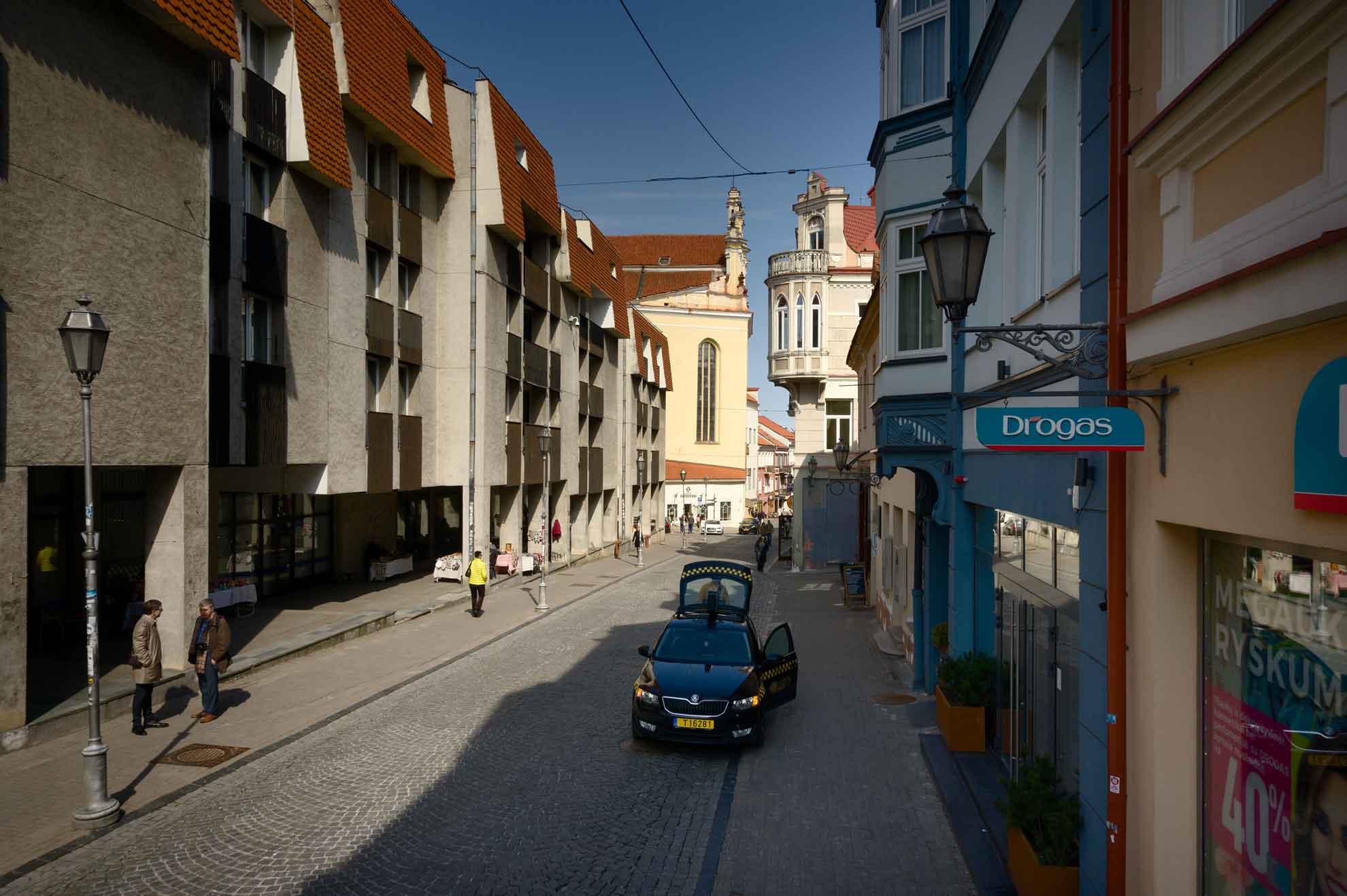
Photographer – Tomas Kapočius
23 Pilies Street. 2018
Lithuanian Art Museum
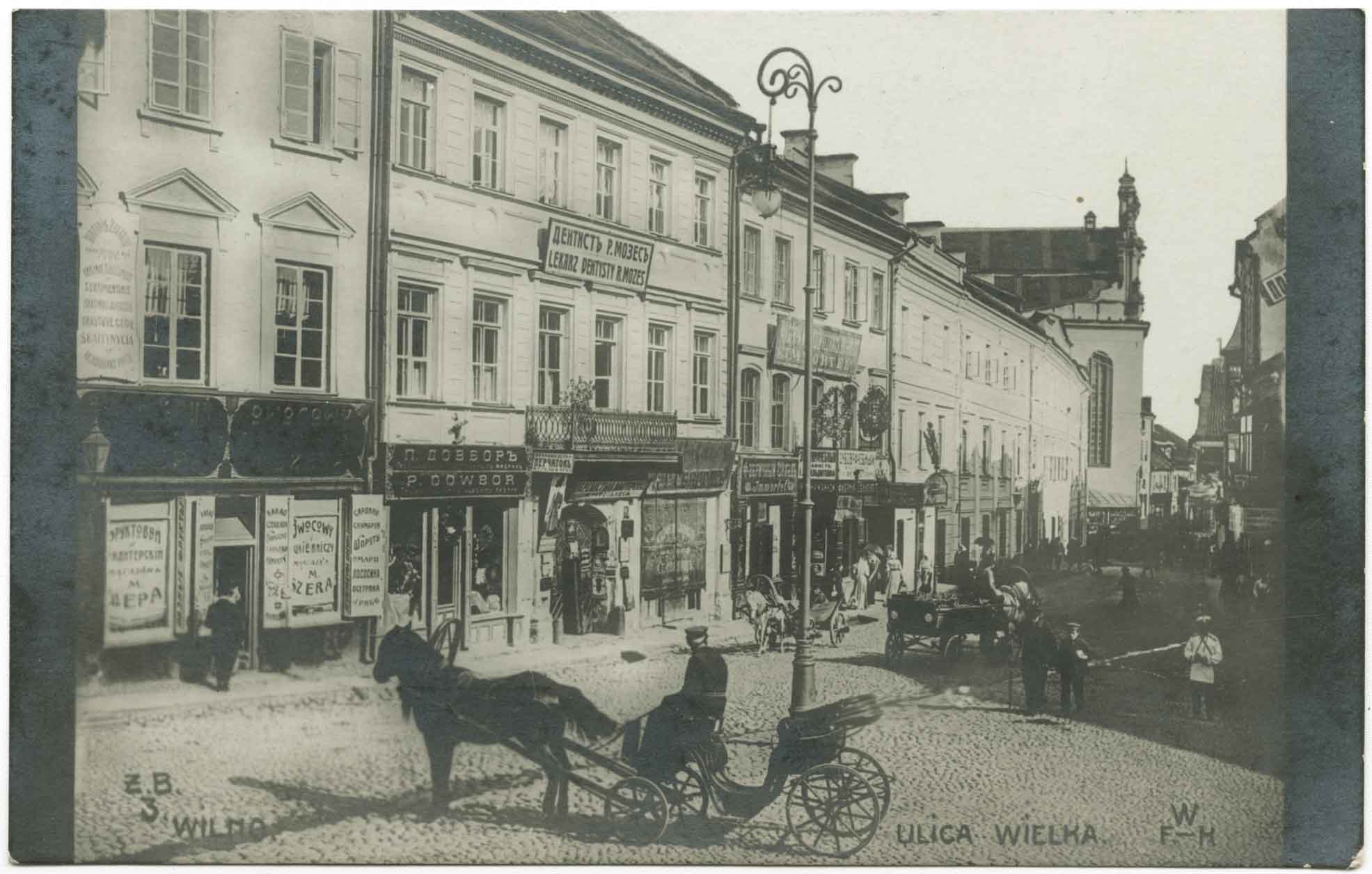
Vilnius. Didžioji Street [present-day 23 Pilies Street]
Postcard. Publisher unknown. Vilnius, ~ 1912
Lithuanian Art Museum
Individuals
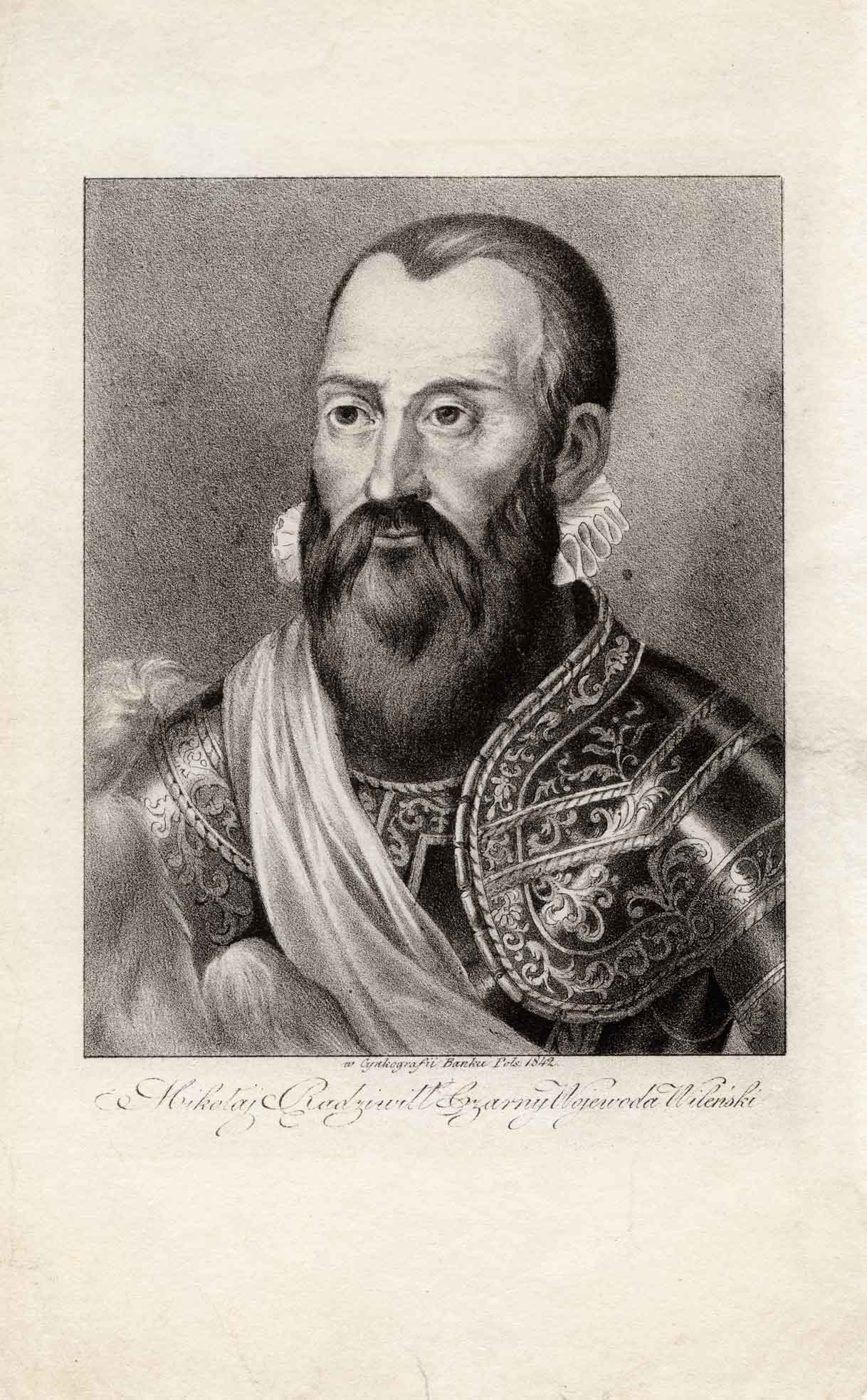
Unknown artist
Mikołaj Radziwiłł the Black (1515–1565). 1842
Paper, lithograph
Lithuanian Art Museum
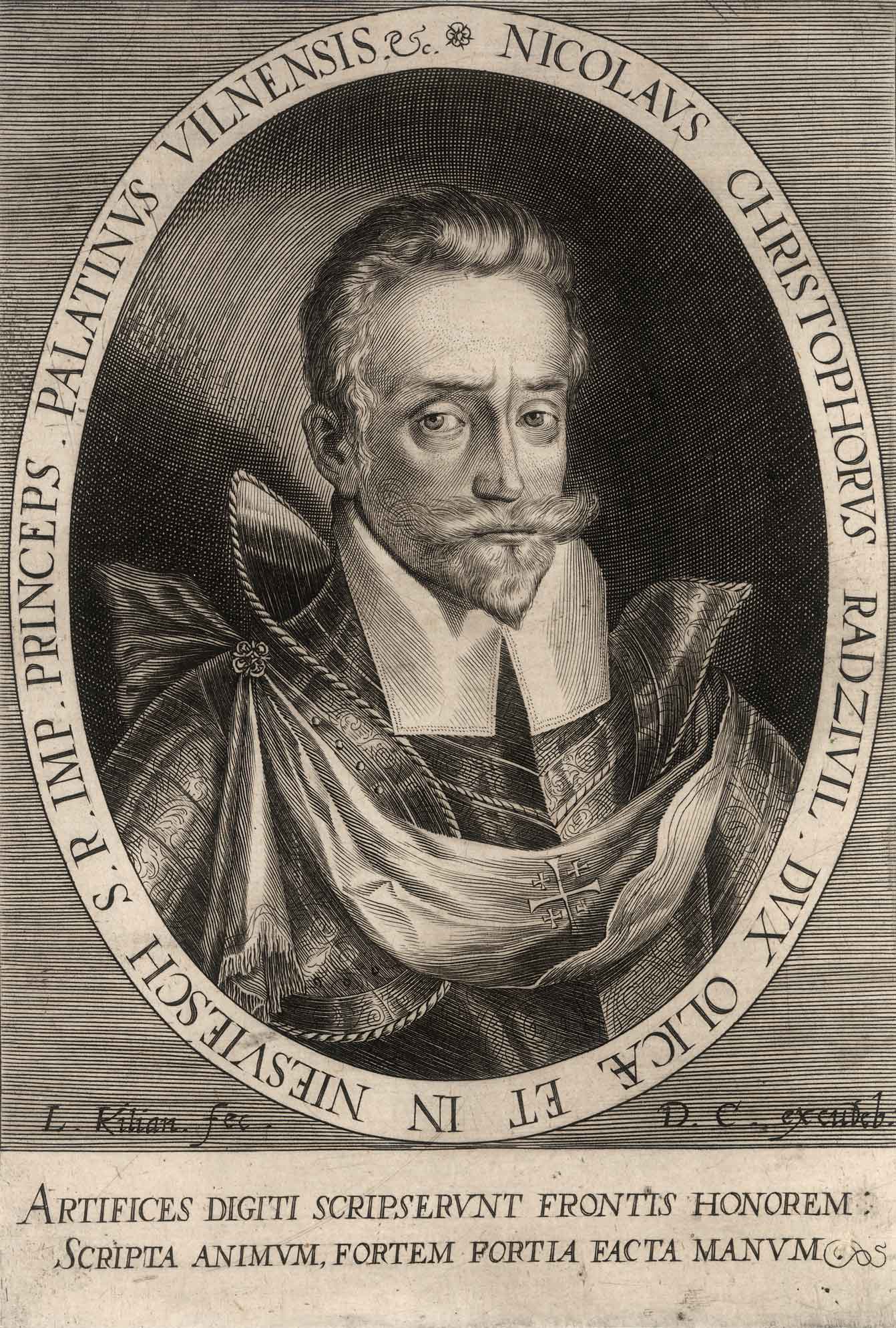
Lucas Kilian (1579–1637), Dominicus Custos (1550–1612)
Mikołaj Krzysztof Radziwiłł the Orphan (1549–1616).
1610–1637
Paper, copper engraving
Lithuanian Art Museum

Lucas Kilian (1579–1637)
Jerzy Radziwiłł (1556–1600). 1610–1637
Paper, copper engraving
Lithuanian Art Museum
JERZY RADZIWIŁŁ (1556–1600)
Jerzy Radziwiłł was a magnate in the Grand Duchy of Lithuania, a bishop ordinary in Vilnius, and the first cardinal of the Roman Catholic Church from Lithuania. He studied at the university in Leipzig from 1570. From 1573 he studied with Piotr Skarga in Vilnius, whose influence is believed to have brought on his conversion from the Evangelical Reformed faith to Catholicism, which he publicly professed in 1574. He studied philosophy and theology in Rome in 1575–1577. Radziwiłł saw to the granting of academy and university rights to the Vilnius Jesuit College (1579). In 1582 he founded the Vilnius Diocese Seminary. In 1583 he was ordained a priest, and was elected as the bishop of Vilnius several months later. That same year, the pope announced his new rank as a cardinal presbyter of the Roman Catholic Church. He received the cardinal’s red hat in Rome in 1586 and was assigned the titulus of St Sisto. He was a prominent figure in state affairs, contributing to the compilation of the Third Statute of Lithuania (1588). In 1591 he was appointed as the bishop of Krakow. He died in Rome. Radziwiłł wrote memoirs from his travels. The residence of Jerzy Radziwiłł in Vilnius (present-day 23 Pilies Street) was known as the Cardinal’s Palace based on its owner’s title.

